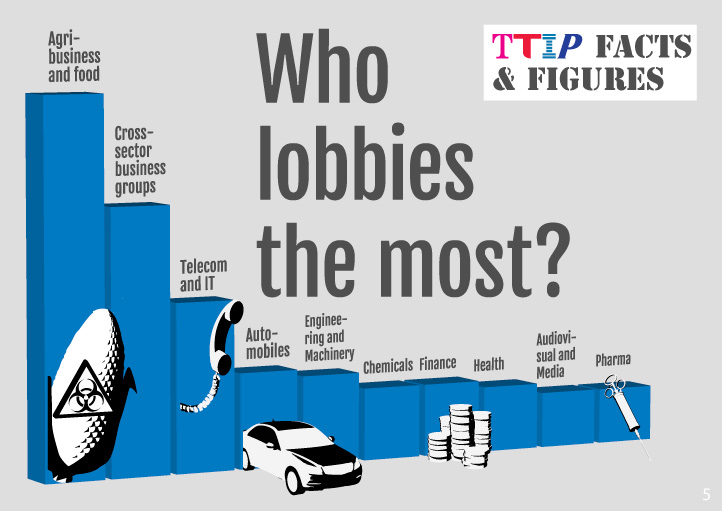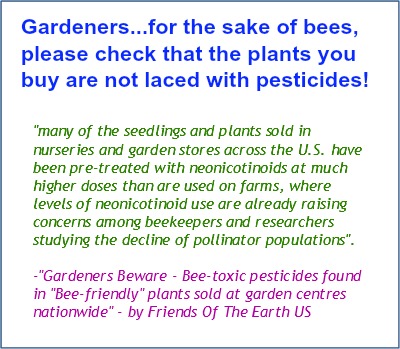Neonicotinoids In Your Bee Friendly Plants?
Reports from Friends of the Earth have confirmed a concern I have had for some years now: the issue of contamination of ‘bee friendly plants’ bought from retail outlets, being contaminated with neonicotinoids. In particular, I’ve had major concerns about Dutch bulbs, due to a Dutch documentary I saw regarding the use of neonicotinoids in their cultivation.
Update: Please note, this page was written in 2014. The information may or may not be applicable today.
Two key reports, one from the USA, one from Europe:
Reports from Friends of the Earth
USA:
Friends of the Earth in the USA have raised concerns about plants being
cultivated using neonicotinoids. Is such cultivation using neonicotinoids
happening in other countries?
Europe:
Greenpeace also
conducted a study:
'A Toxic Eden: Poisons in Your Garden; An analysis of bee-harming pesticides in ornamental plants sold in Europe'.
Samples were taken from 10 European countries:
Austria,
France,
Germany,
Greece,
Hungary,
Italy,
Netherlands,
Poland,
Spain
and Switzerland.
Pesticides, including neonicotinoids, which have particular properties, such as being systemic and persistent in soil.
 Who lobbies the EU most? Agri business. Source: Corporate Europe.
Who lobbies the EU most? Agri business. Source: Corporate Europe.
Samples from the UK were not included.
(Copy and paste this link in a new window to see the report: http://sos-bees.org/wp-content/uploads/2014/04/A-Toxic-Eden.pdf).
Key points from the report:
- Results were gathered from the laboratory analysis of ornamental plants sourced from
garden centres, supermarkets and DIY-stores in ten European countries.
- The
samples comprised more than 35 popular varieties like viola, bellflower and
lavender which are attractive to bees.
- Of the 86 samples analysed, pesticide residues were found in 84 (97,6%) of these flowering plants. Only 2% of the samples contained no detectable residues.
- Insecticides regarded as of particular toxicological significance to bees were found frequently. In 68 of the 86 tested ornamental plants (79% of the samples) bee-harming pesticides were detected.
- The three
neonicotinoid pesticides which have been restricted Europe-wide for certain
agricultural uses in order to prevent exposure to bees were found in almost half of
the samples, partly in
high
concentrations:
- 43% of the samples contained Imidacloprid,
- 8% Thiamethoxam
- 7% Clothianidin.
Actions we can take
Here are some suggestions:
- Grow from (untreated) seeds (many bee-friendly plants are easily grown from seed, including, Canterbury Bells, Cornflower, Cosmos, Lupin, Linnaria, Polemonium, Poppy). See bee friendly plants.
- Share bee-friendly plants with friends and family you trust, from older, neonic-free stock
- Buy from a
local nursery. Check that they do not
use neonicotinoids, including Thiacloprid and Acetamiprid.
- Leave out the pesticides.
If you found this page helpful or interesting, I'd really be grateful if you would share it with others - if not this page, perhaps another, such as Gardening For Bees.
Thank you so much :) .
